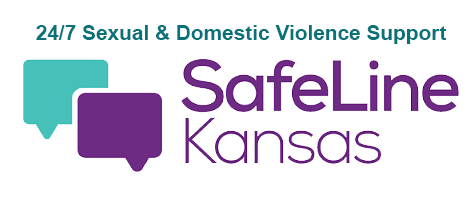Safety Planning

Safety Planning: Your Choices, Your Pace
A safety plan is a personalized, practical plan to improve your safety in the moment and going forward. It might include steps like changing routines, saving evidence, or adjusting privacy settings.
You don’t need to wait until something serious happens—safety planning is for anyone who feels unsafe or at risk.
Find Help - Locate and Advocate Near You
Protection Order Support
Safety Planning for Leaving Abusive Relationships
What You Can Do If You Were Sexually Assaulted
What You Can Do If You Are Experiencing Domestic Violence
What Does “Safety Planning” Mean?
Create a Roadmap
A clear plan helps you know what to do, where to go, and whom to contact if you face danger.
- What should you pack?
- What documents will help you?
- Should you tell your job what is happening?
Anticipate Potential Risks
Abuse can escalate at different stages. Whether you’re still with the person, leaving, or already apart – be ready with options.
- Many survivors report that the violence they experienced or were threatened with was far more severe after they left their abuser.
- Understand how technology can be used to extend control and put you at risk – learn more about how technology is part of a good safety plan: www.techsafety.org/resources-survivors.
Include Stalking Strategies
It is not unusual for survivors to experience stalking when they leave a relationship or after an instance of dating violence. Planning to keep your technology safe, change your routines, or get a protection order can all be part of your plan
Trauma-informed Resilience
Your safety plan is about you. It empowers you to live your life by giving you the tools that can keep you free from harm while also respecting what you are comfortable with doing.
You can decide how to incorporate advocate support, law enforcement, healthcare options, and the courts into your plan.
Safety Planning for Survivors with Disabilities
Survivors with disabilities face unique barriers and risks when experiencing domestic and sexual violence. These may include physical accessibility challenges, communication barriers, navigating unfamiliar systems, or reliance on caregivers who may also be the abuser. KCSDV recognizes these heightened vulnerabilities and highlights safety planning as a critical tool for empowerment and protection.
The Kansas BELIEVE Project
The Kansas BELIEVE Project—a collaboration between KCSDV and the Self Advocate Coalition of Kansas (SACK)—aims to build leadership and empower individuals with disabilities while addressing sexual and domestic violence through accessible and inclusive services. This initiative underscores KCSDV’s commitment to proactive inclusion and survivor-centered advocacy.
SACK: A Dedicated Partner for Survivors with Disabilities
SACK (Self Advocate Coalition of Kansas) plays a vital role in the Kansas BELIEVE Project and beyond. As a self-advocacy organization, SACK brings lived experience and disability-focused leadership to the forefront:
- Co-development of safety guidance: Through the BELIEVE Project, SACK helps shape safety planning tools that consider mobility, sensory, cognitive, and communication needs.
- Peer-driven support: Survivors with disabilities may feel safer and more understood when working with peers who share similar experiences and understand accessible communication.
- Advocacy amplification: SACK ensures survivor voices influence policy and resource access, reinforcing that disability and justice are intertwined.
You’re the Expert—With or Without Help
Safety planning is most effective when it's tailored to you. You know your life best. You can use this and other online resources to start to understand what a safety plan could look like for you.
- We recommend that you work with a trained advocate to understand the risks, options, and resources are available for your situation. Remember – working with a DV/SA advocate at a Kansas program is free, and their support is confidential.
- Part of the reason we recommend working with an advocate is because it is almost impossible to try to put all the questions to consider and the resources you could engage into one document. To give you the best potential help with your specific circumstances, an advocate who is working directly with you can be a difference maker.
- You remain in control. Deciding what feels safe, realistic, and possible is your choice. You can also change things as you go and as your circumstances change.
- It's voluntary. No one will require you to complete a safety plan to receive help. You can connect with an advocate any time without having a plan in place first.
- You set the pace. Whether you draw up a plan on your own or work with an advocate, you choose the timing and level of detail that match your situation.
safety Planning can protect you and your loved ones but if you are in immediate danger, contact an Advocate and consider if calling 911 is safe.
Some Basic Guidance: What a Safety Plan Can Look Like?
Every safety plan is different, but often includes:
Identifying Safe Locations:
Is there somewhere in your home you can be secure?
Do you know where you can stop or go to in public to make sure you aren't alone?
Looking Ahead:
Be ready to adjust plans.
Think ahead to give yourself multiple options so you aren't feeling lost if something changes.
Varying Routines:
Change up routes to increase unpredictability.
Be careful how you are using and sharing a calendar.
Documenting Incidents:
Helpful for safety and legal action.
Take precautions in how you store images - can you send to a friend to preserve the files?
Protect Yourself Online:
Should you get a different phone? Have you changed your passwords? Are you clearing browsing history?
Involving Your Support Network:
Friends, neighbors, coworkers, school staff can all be part of a safety plan. You don’t have to do this by yourself.
Legal Options:
Learn about protective orders, consider what involving the police means. Are you prepared to support what happened to you in court?
Talk to an Advocate
Safety Plans change with you – what does that look like?
Your safety planning can—and should—evolve:
- If your situation changes (someone moves in, a stalker escalates), update your plan.
- You can work with an advocate to regularly review what’s working and what needs adjustment. You can call or text Safeline KS for help too: 1-888-363-2287 or text SAFE to 847411.
You're Not Alone
KCSDV connects you to trusted local programs across Kansas—available at no cost and without obligation. Whether you want to build a plan alone, with us, or just need someone to talk to, we’re here.
Remember
- Safety planning is recommended—but never required.
- You’re in control: do it when you’re ready, at your own pace.
- Support is here: you choose whether to plan solo or with KCSDV-trained advocates.










